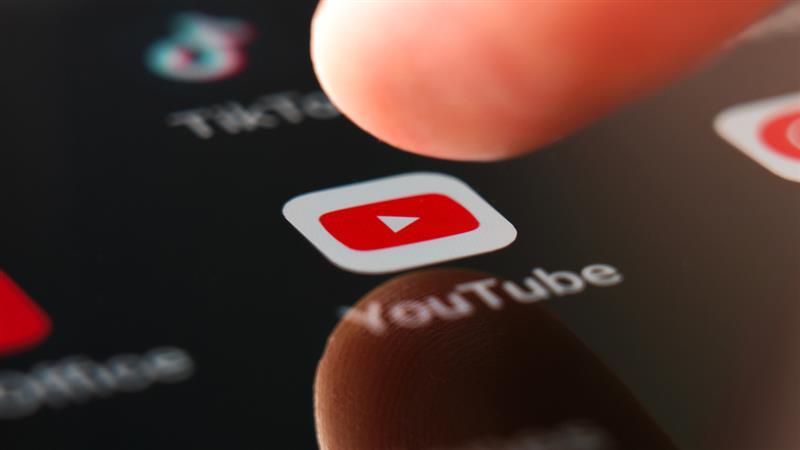How to Maximize the Impact of Your B2B YouTube Channel

July 30, 2025
Should my company have a YouTube channel? That’s a question we were asked recently by a B2B client. It’s a question others may have, too. The short answer? Video is an integral part of a successful marketing strategy. An astounding 89% of businesses use video as a marketing tool today, since the majority of customers prefer watching a short video rather than reading text. Engaging videos help potential clients and employees better understand the benefits of what your company provides, while building credibility and thought leadership.
Therefore, if you’re creating videos, having a YouTube channel is essential for both housing and promoting your videos, and gathering analytics. Owned by Google, YouTube is the second-largest search engine in the world. Having a YouTube channel will improve your search engine ranking and increase brand exposure.
As with any platform, having an effective strategy is critical. Here are seven tips for maximizing the impact of your company's YouTube channel.
1. Focus on your audience’s interests.
Before diving into content creation, it's crucial to understand who your target audience is and what they watch. Who are your decision makers? What content would be a good match for their challenges, preferences, and interests? This could include product demonstrations, case studies, insights, how-to guides, and interviews with your team and industry experts.
Segmenting your audience based on industry, company size, and job function can also help you tailor your content more effectively. This ensures that the information you provide is relevant and valuable to the people most likely to engage with your channel.
2. Create branded, eye-catching thumbnails.
According to YouTube, 90% of the best-performing videos have custom thumbnails. Thumbnails act as the first impression of your video—where users decide whether they want to watch it or not. They should be compelling and eye-catching, while providing an accurate representation of the content. Tease your content with an image and text that piques interest.
Ensure your brand identity is consistent across each thumbnail. This could be done by creating a template that uses the same color palette, font, and graphic elements. The aspect ratio for YouTube thumbnails is 16:9, and the image should be 1280 x 720 pixels. While thumbnails may appear small in search results, the video could be embedded on a web page or social post, so the image should still look good at a larger size. Keep in mind, 2MB is the maximum acceptable file size.
3. Reduce drop-off with high-quality audio and info cards.
Make sure your videos are professionally produced with clear audio and visuals. This not only reflects well on your brand but also reduces viewer drop-off. A study by TechSmith found that 75% of viewers will continue watching a video with good audio even if the video quality is poor, compared to only 55% for a high-quality video with poor audio. Audio quality is paramount. Check out this blog post for tips on improving room acoustics and choosing the right microphone.
Cross-promoting content with YouTube Info Cards is a great way to engage viewers and keep them on your channel. Info cards are clickable panels you can place strategically at a specific timestamp to promote other videos, playlists, channels, or external web pages.
4. Organize videos with playlists and categories.
Group your videos into playlists based on topics or themes so viewers can easily find the content they need. This also helps YouTube provide relevant Suggested Videos, keeping people on your channel. Title your playlists accordingly, incorporating the right industry keywords. Playlists rank in search results and can boost SEO performance.
When uploading a video, you can add it to one of YouTube’s 15 existing categories, enabling viewers to find it more easily. If your content falls under multiple categories, try testing different categories to see which one performs best. Sometimes your content won't fall under any of the categories, and that’s okay. The video’s title, tags, thumbnail and description will help YouTube group it with like content when recommending videos to users.
5. Leverage YouTube SEO best practices.
Just like traditional SEO, optimizing your YouTube videos for search is essential for increasing visibility. Start by conducting keyword research to identify the terms and phrases your target audience is searching for. Use these keywords in your video titles, descriptions, and tags.
Providing a transcript and subtitles as well not only makes your videos accessible but also enhances SEO by providing more text for search engines to crawl. And depending on what platform the video is being shared on, users may watch it without sound. For example, 85% of videos on Facebook are viewed with the sound off.
6. Promote your channel across multiple platforms.
Promoting your YouTube channel across multiple platforms can significantly boost your reach and engagement. Share your videos on your company's social media profiles, embed them in blog posts, and include them in email newsletters.
Collaborating with industry influencers and thought leaders can also help to amplify your content. By leveraging their audience, you can increase your videos’ exposure and credibility. Additionally, consider running YouTube ads to target specific segments of your audience more effectively.
7. Utilize analytics to refine strategies.
YouTube Analytics is a powerful tool that can help you understand how your videos are performing and where there is room for improvement. Pay attention to metrics such as watch time, audience retention, and engagement rates to gauge the effectiveness of your content.
Use these insights to refine your content strategy. For example, if you notice that certain types of videos have higher engagement rates, consider producing more of that content. Similarly, if viewers are dropping off at a specific point in your videos, analyze why that might be and adjust accordingly.
We hope these tips help you as you leverage the power of video to grow your business! Check out our blog series on creating a YouTube channel for more tips and best practices.





